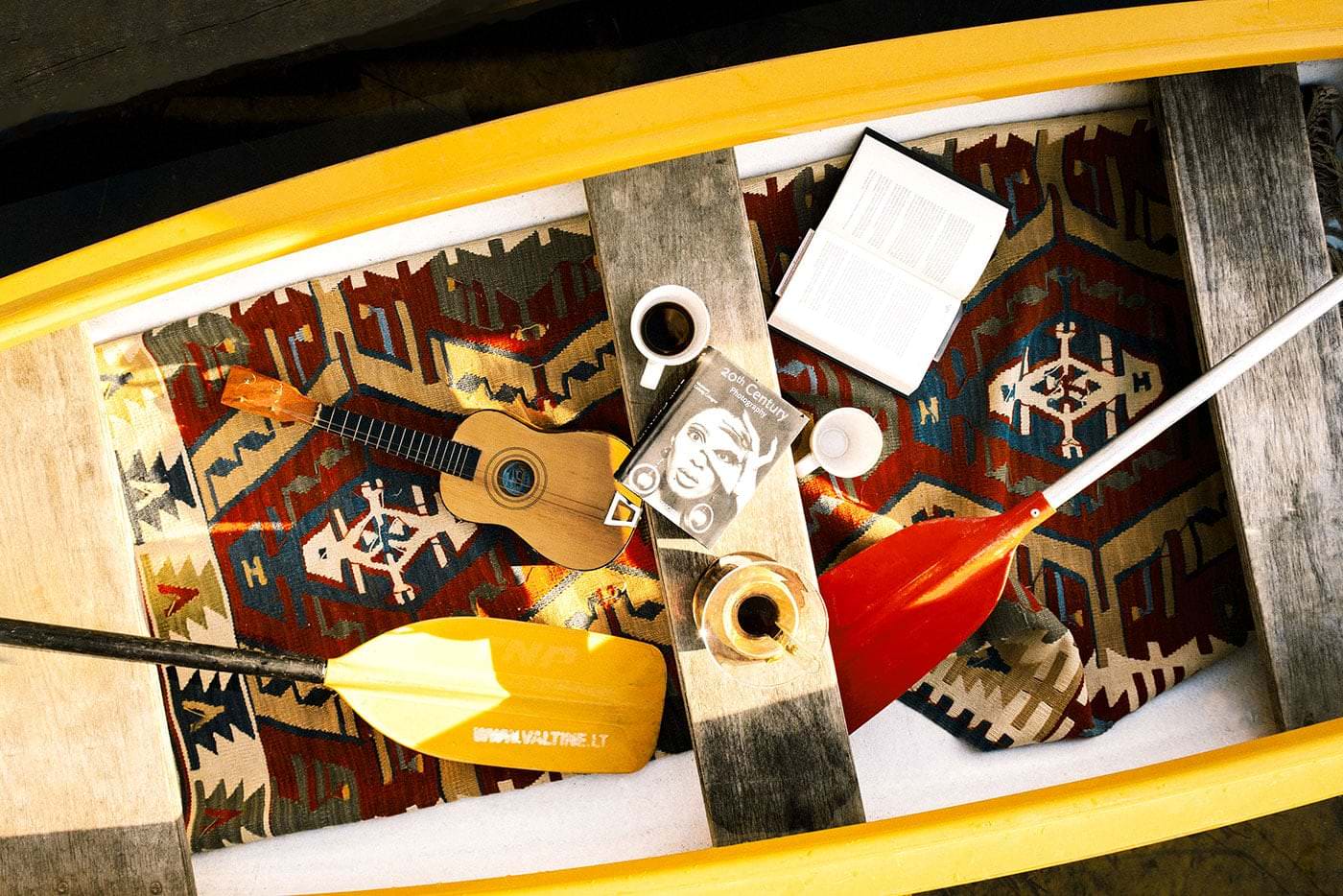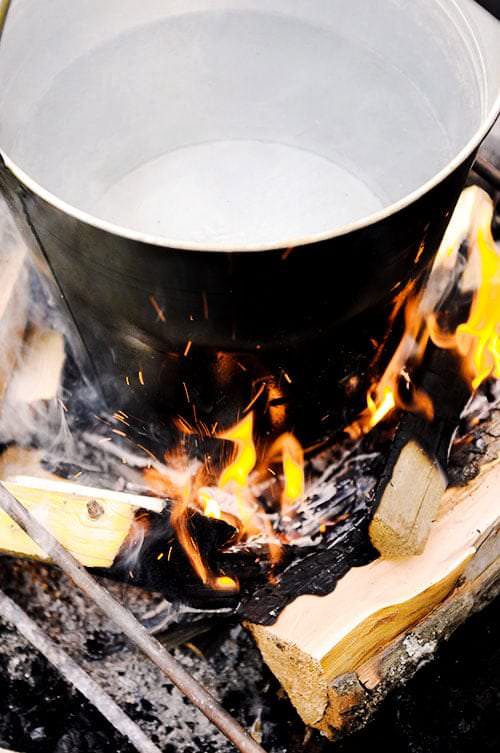
Travelling on water doesn't require any special equipment or training. All you need are the usual tourist items:
- route map (waterway marking in Lithuania is minimal, so the map will be your main guide); at Palūšė Boat House you'll get free route maps and you can buy detailed maps of the region;
- food and beverages (on some routes you won't have any chances to replenish your stocks - read more about shopping possibilities in our route descriptions);
- tent, sleeping bag and mat;
- clothing and footwear, depending on the weather forecast (we advise you to take some warmer clothing, even in summer), rain coat, sunhat, sunglasses;
- kettle (for cooking and tea), ladle, knife, spoon, cup, eating bowl, cutting board;
- axe or saw;
- protection against sun and insects;
- matches or a lighter, fire-starting liquid or dry fuel;
- flashlight, candles;
- hygiene products, personal medicines, first aid kit;
- waterproof bags, string;
- camera;
- plastic garbage bags (often used for waterproofing).
Think about food and how you'll prepare your meals. Please remember that cooking outdoors is not very convenient, so pick ready-to-cook products (canned preserves or dried food that you just need to pour hot water on, etc.). Most likely, you'll cook your food on the bonfire, and even if you bring along a gas cooker, the fire will still be an essential part of your trip. You'll need firewood, so bring an axe or saw. Please remember that a green tree is a living tree - never cut it down! Fallen branches and dead trees abound on river banks, they'll make great fuel for your bonfire. Camping in national and regional parks is allowed only at designated and marked campsites and recreation areas. These places are indicated on your route maps. Campsite living conditions are very basic: outdoor furniture, fireplaces, access to water. On some routes (outside park areas) you'll sleep at primitive campsites where you'll find just a fireplace and, if you're lucky, a few logs to sit on.
Check our prices
Consider which is the most suitable to you: kayaking, canoeing, or row boating. Most people choose kayaks, some prefer canoes, and the traditional way to travel around the Aukštaitija National Park lake ring is by rowboat. Every means has its advantages and disadvantages: kayaks are light, manoeuvrable, easy to transport, but inexperienced travellers will have a hard time trying to accommodate all their items in a kayak. Rowboats are the opposite: larger, heavier, less manoeuvrable, difficult to transport, and some routes you just can't take by boat; but they offer enough place for your bags and supplies and are safe to travel with children. Canoes can be described as both manoeuvrable and spacious, but canoeing requires just a bit more paddling skill.
When you arrive at a campsite, keep your kayaks, canoes, paddles and life jackets close to your tents. Pull the boats onshore and tie them to the nearest trees or bridges. Put your lifejackets and
row boat oars close to the tent. Please, protect your things (especially photo cameras, mobile phones, personal documents, money) and rented equipment.
Write to us: valtinepaluses@gmail.com
Call us (we speak English ): +370 650 58515





